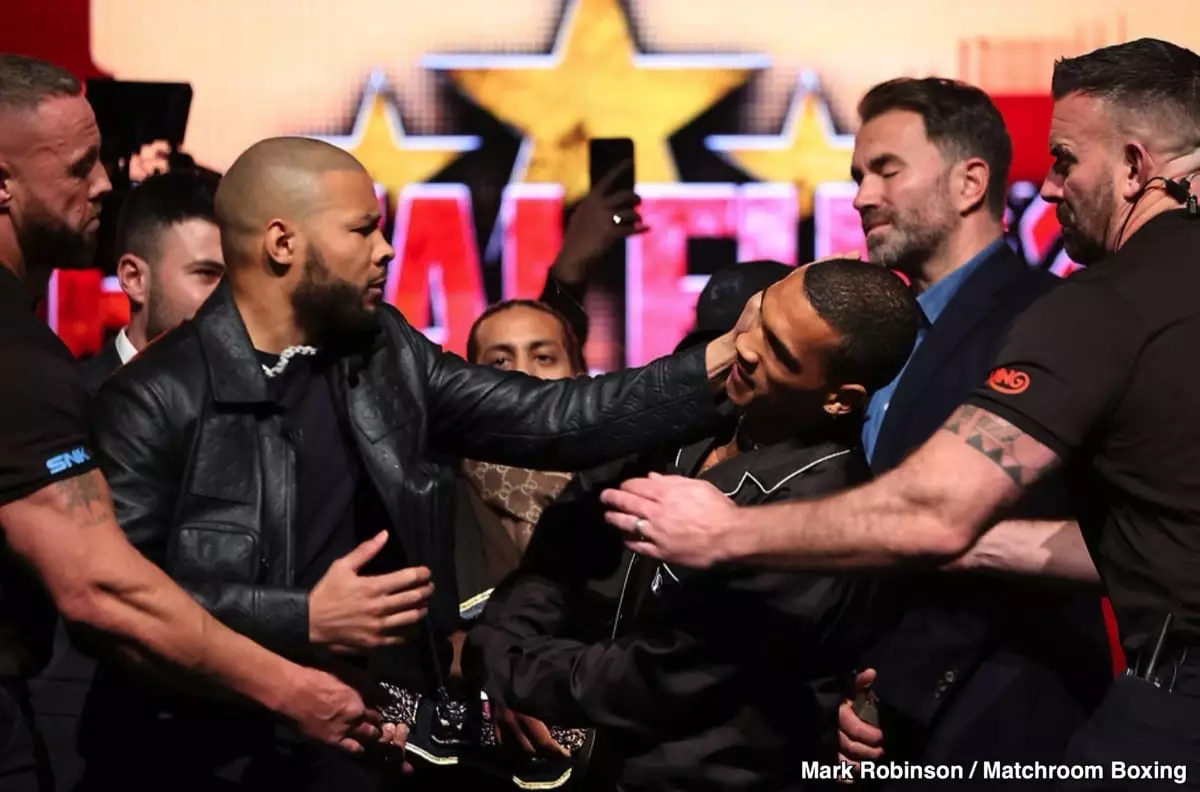In the landscape of modern boxing, few match-ups have garnered as much excitement and anticipation as the upcoming fight between Conor Benn and Chris Eubank Jr. Dubbed “The Next Generation Grudge Match,” this fight is not merely another headline bout; it’s a revival of a storied rivalry that has nostalgic roots deeply embedded in British boxing. The shadows of their legendary fathers loom large, with Conor being the son of the formidable Nigel Benn and Chris the offspring of the iconic Chris Eubank Sr. Their lineage alone stirs expectations, but it’s the saga leading to this fight that has truly galvanized public interest.
Initially scheduled to take place a couple of years prior, the bout was indefinitely postponed due to Conor Benn’s drug test failures. This setback only amplified the stakes, especially in the UK, where boxing still reverberates with the echoes of classic rivalries. With the fight now set for April 26, the tension has escalated into a full-blown spectacle, complete with outrageous pre-fight antics and barbed insults that capture audience intrigue. Eubank, already known for his flamboyant personality, has taken to taunting Benn mercilessly, propelling the match beyond mere athletic competition into the realm of theatrical drama.
The Business of Pay-Per-View
One cannot overlook the financial aspect of this spectacle, particularly for British viewers. Priced at £21.99 for DAZN subscribers—though the subscription itself is £24.99—the cost of watching this clash starkly reveals the economic complexities of modern boxing promotions. Despite being a streaming platform that promised the demise of traditional pay-per-view (PPV) events, DAZN is continuing the long-standing, and oft-maligned, PPV model. Critics often take issue with the constant monetary demands placed on fans—especially when they’re already paying a subscription fee. However, the allure of the Benn vs. Eubank rivalry may just justify this additional expenditure for a segment of fight enthusiasts, particularly those who relish the nostalgia of past encounters.
While initial observations of the undercard showed it to be lackluster, the gravitational pull of the main event is expected to eclipse any concerns regarding supporting bouts. Fans of boxing, especially in the UK, seem to revel in the possibility of a drama-infused showdown, wielding their wallets as a testament to their loyalty to boxing traditions. It serves as a sharp reminder of how historical narratives can captivate the modern viewer.
A Narrative that Engages Casual Fans
One of the most compelling aspects of this fight is its ability to captivate not just die-hard boxing fans, but also the casual observers who may recall the gripping clashes between the original Benn and Eubank. The saturation of media appearances, including a striking segment on Piers Morgan’s show, highlights the duo’s star power—it’s evident that their heated exchanges and shared disdain are drawing in viewers who might not usually engage with the sport. The media buzz has already kicked off a frenzy, feeding off the public’s nostalgia while igniting new intrigues surrounding the sport.
As the fight date approaches, significant speculation surrounds how many fans will be willing to shell out for the opportunity to witness this generational clash. The match comes at a time when boxing is situated precariously between its glory days—anchored by classic rivalries—and a future that feels relentlessly commercialized. Will this phenomenon translate into a successful pay-per-view event? Predictions are meandering, but the eagerness emanating from the UK supports a strong belief that the event will indeed break box office records.
Broader Implications for Boxing
What remains particularly fascinating about this engagement is its broader implications for boxing’s future. The Benn vs. Eubank fight serves as an experiment in nostalgia versus innovation. On one hand, it draws heavily on the emotional attachments of fans who vividly remember the historic bouts between their fathers; on the other, it must navigate the current economic landscape of sports broadcasting, subscription models, and impending new talent discoveries. If successful, the bout could very well set the stage for similar events that tether the past and present.
Ultimately, this fight embodies a unique pivot point for not just the participants, but for the boxing community at large, raising questions on how the sport can maintain its allure amidst increasingly commercial demands. The blending of celebrity culture, competitive spirit, and an all-too familiar narrative positions Benn and Eubank not just as fighters, but as key figures in the ongoing saga of boxing’s evolution.


Leave a Reply